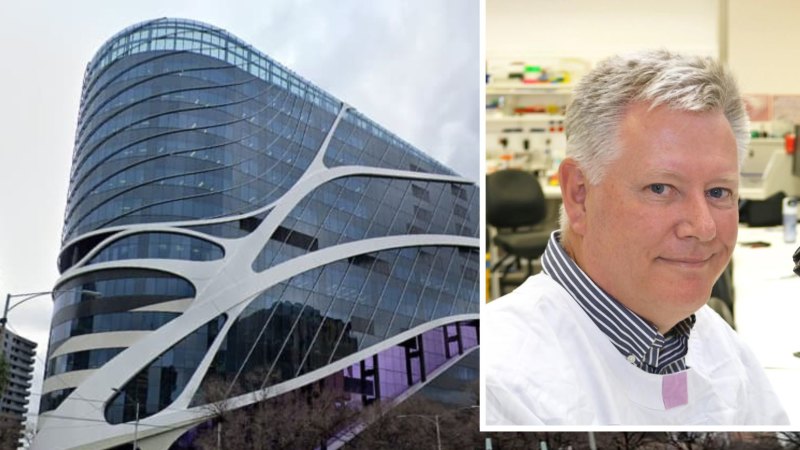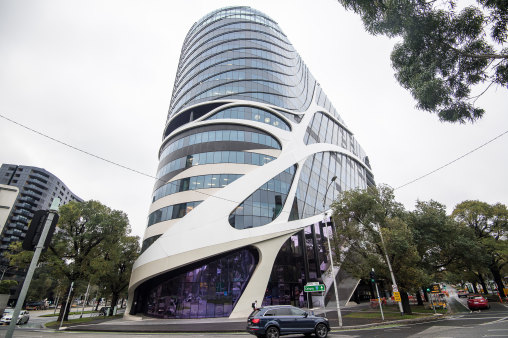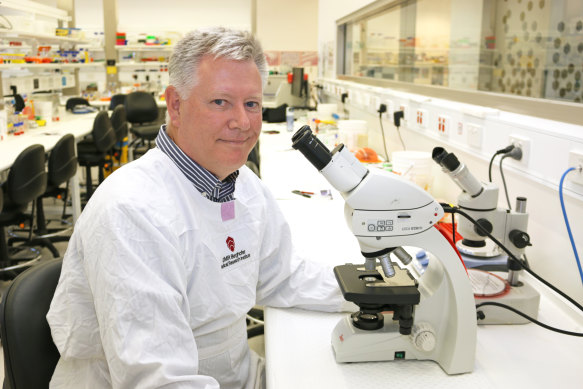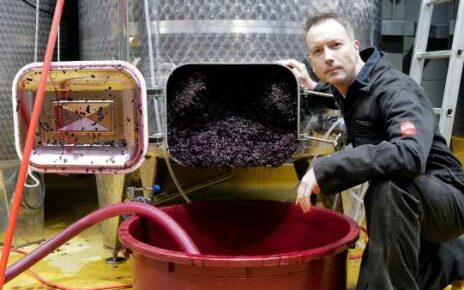Save articles for later
Add articles to your saved list and come back to them any time.
Melbourne’s iconic Peter MacCallum Cancer Centre has become embroiled in a research misconduct scandal after an investigation discovered experiments in an important cancer study were likely never performed.
The centre could now be required to repay the taxpayer dollars used to run the melanoma study.
The Peter MacCallum Cancer Centre in Parkville.Credit: Justin McManus
The study was led by Mark Smyth, who was one of Australia’s foremost cancer researchers until 2021, when his employer, QIMR Berghofer Medical Research Institute in Queensland, reported him over allegations of research misconduct.
Before Smyth worked at QIMR, he spent 13 years working at Peter Mac, rising to co-head of the cellular immunity program. He published more than 150 papers while working there.
Last week, the Journal of Clinical Oncology placed a retraction notice on a paper Smyth co-authored while working at Peter Mac in 2016.
The retracted paper looked at the case of a 39-year-old woman with melanoma that had spread to her bones.
Professor Mark Smyth, the former head of immunology in cancer at the QIMR Berghofer Medical Research Institute.
She was treated with two antibodies, ipilimumab and denosumab. The woman made a striking recovery, and by the end of treatment her pain was gone.
The researchers then claimed they tested the combination of the two antibodies in mice with melanoma, and also found it to be effective.
On the basis of human and mice data, the researchers suggested the combination treatment should be further studied in humans.
But in a retraction note, the journal said: “An external investigation committee found that although the raw data used to produce Figure 2 was accessible in handwritten and electronic formats, there was a lack of correlation between the mouse numbers in the handwritten notes and the animal use database.
“Due to the lack of supporting information in the animal database records, the investigation committee concluded that on the balance of probabilities, it is unlikely that the experiments shown in Figure 2 were actually performed.”
The retracted paper was funded with multiple grants from the taxpayer-funded National Health and Medical Research Council of Australia (NHMRC). It has been cited by other researchers more than 70 times.
In a statement, Peter Mac said the paper was retracted after it initiated an investigation into Smyth’s contribution.
“Peter Mac initiated an expert investigation and notified the Journal of Clinical Oncology of concerns about the contribution of Professor Mark Smyth to a paper published by the journal in 2016, and we support their decision to retract this paper,” they said.
The retracted paper looked at the case of a 39-year-old woman with melanoma that had spread to her bones.
“Peter Mac has strict protocols in place to ensure our research program operates to the highest standards of integrity and governance. This includes mandatory research integrity training programs and the use of an electronic lab notebook system to track lab projects in real time.”
When QIMR discovered Smyth’s alleged research misconduct, it had to give up millions in taxpayer-funded grants.
Smyth was given nine grants by the taxpayer-funded NHMRC while working at Peter Mac, worth $16.89 million. Peter Mac did not respond to questions about whether they may need to now repay funding for Smyth’s melanoma study.
“Under the NHMRC Research Integrity and Misconduct Policy, NHMRC may take consequential actions in response to findings of research misconduct involving NHMRC funding,” a council spokeswoman said.
“This may include recovery, taking into account the proportion of funding involved in the research misconduct matter and whether it would be economical to pursue the recovery of Commonwealth funds.”
Smyth published more than 150 papers while working there, a senior Peter Mac researcher estimated.
In 2014, Smyth was investigated over concerns about his research while working at Peter Mac, The Age can further reveal. After concerns were raised, they were forwarded to the University of Melbourne for investigation.
“The investigation panel, comprising distinguished researchers and a senior, independent QC, did not find that research misconduct had occurred,” a University of Melbourne spokesman confirmed.
Smyth has never publicly responded to the allegations against him. Messages sent to his email and LinkedIn have not been returned.
A review by QIMR, released earlier this year, found Smyth was “a bully who used his reputation, status and power to intimidate” and avoid scrutiny of his research.
The review found Smyth published 238 papers while at QIMR, but could not have possibly conducted enough animal experiments to generate that data.
“The panel established in the course of its investigation that Professor Smyth needed to spend a considerable amount of time in the Animal Facility to have been able to generate the data that he claimed to have done. The Panel was satisfied that in fact, Professor Smyth did not spend anywhere near enough time in the Animal Facility to have carried out the experiments that generated the claimed data,” the review said.
Do you know more? Email [email protected] or [email protected]
Liam Mannix’s Examine newsletter explains and analyses science with a rigorous focus on the evidence. Sign up to get it each week.
Most Viewed in National
From our partners
Source: Read Full Article





